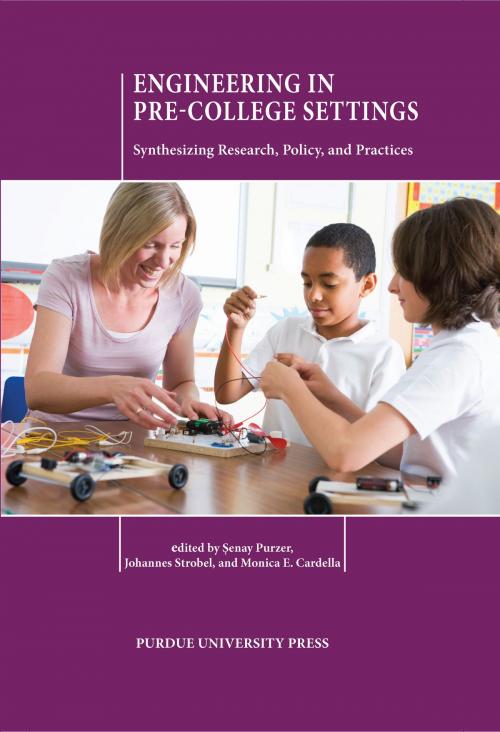Engineering in Pre-College Settings
Synthesizing Research, Policy, and Practices
Nonfiction, Reference & Language, Education & Teaching, Educational Theory, Philosophy & Social Aspects, Science & Nature, Technology, Engineering, Teaching, Teaching Methods| Author: | ISBN: | 9781612493589 | |
| Publisher: | Purdue University Press | Publication: | November 15, 2014 |
| Imprint: | Purdue University Press | Language: | English |
| Author: | |
| ISBN: | 9781612493589 |
| Publisher: | Purdue University Press |
| Publication: | November 15, 2014 |
| Imprint: | Purdue University Press |
| Language: | English |
In science, technology, engineering, and mathematics (STEM) education in pre-college, engineering is not the silent "e" anymore. There is an accelerated interest in teaching engineering in all grade levels. Structured engineering programs are emerging in schools as well as in out-of-school settings. Over the last ten years, the number of states in the US including engineering in their K-12 standards has tripled, and this trend will continue to grow with the adoption of the Next Generation Science Standards.The interest in pre-college engineering education stems from three different motivations. First, from a workforce pipeline or pathway perspective, researchers and practitioners are interested in understanding precursors, influential and motivational factors, and the progression of engineering thinking. Second, from a general societal perspective, technological literacy and understanding of the role of engineering and technology is becoming increasingly important for the general populace, and it is more imperative to foster this understanding from a younger age. Third, from a STEM integration and education perspective, engineering processes are used as a context to teach science and math concepts. This book addresses each of these motivations and the diverse means used to engage with them.Designed to be a source of background and inspiration for researchers and practitioners alike, this volume includes contributions on policy, synthesis studies, and research studies to catalyze and inform current efforts to improve pre-college engineering education. The book explores teacher learning and practices, as well as how student learning occurs in both formal settings, such as classrooms, and informal settings, such as homes and museums. This volume also includes chapters on assessing design and creativity.
In science, technology, engineering, and mathematics (STEM) education in pre-college, engineering is not the silent "e" anymore. There is an accelerated interest in teaching engineering in all grade levels. Structured engineering programs are emerging in schools as well as in out-of-school settings. Over the last ten years, the number of states in the US including engineering in their K-12 standards has tripled, and this trend will continue to grow with the adoption of the Next Generation Science Standards.The interest in pre-college engineering education stems from three different motivations. First, from a workforce pipeline or pathway perspective, researchers and practitioners are interested in understanding precursors, influential and motivational factors, and the progression of engineering thinking. Second, from a general societal perspective, technological literacy and understanding of the role of engineering and technology is becoming increasingly important for the general populace, and it is more imperative to foster this understanding from a younger age. Third, from a STEM integration and education perspective, engineering processes are used as a context to teach science and math concepts. This book addresses each of these motivations and the diverse means used to engage with them.Designed to be a source of background and inspiration for researchers and practitioners alike, this volume includes contributions on policy, synthesis studies, and research studies to catalyze and inform current efforts to improve pre-college engineering education. The book explores teacher learning and practices, as well as how student learning occurs in both formal settings, such as classrooms, and informal settings, such as homes and museums. This volume also includes chapters on assessing design and creativity.















